Published Apr 8, 2021
10 Alien Races We Want to See in Discovery Season Four
In a galaxy teeming with alien civilizations, the 32nd Century is ripe for further exploration.
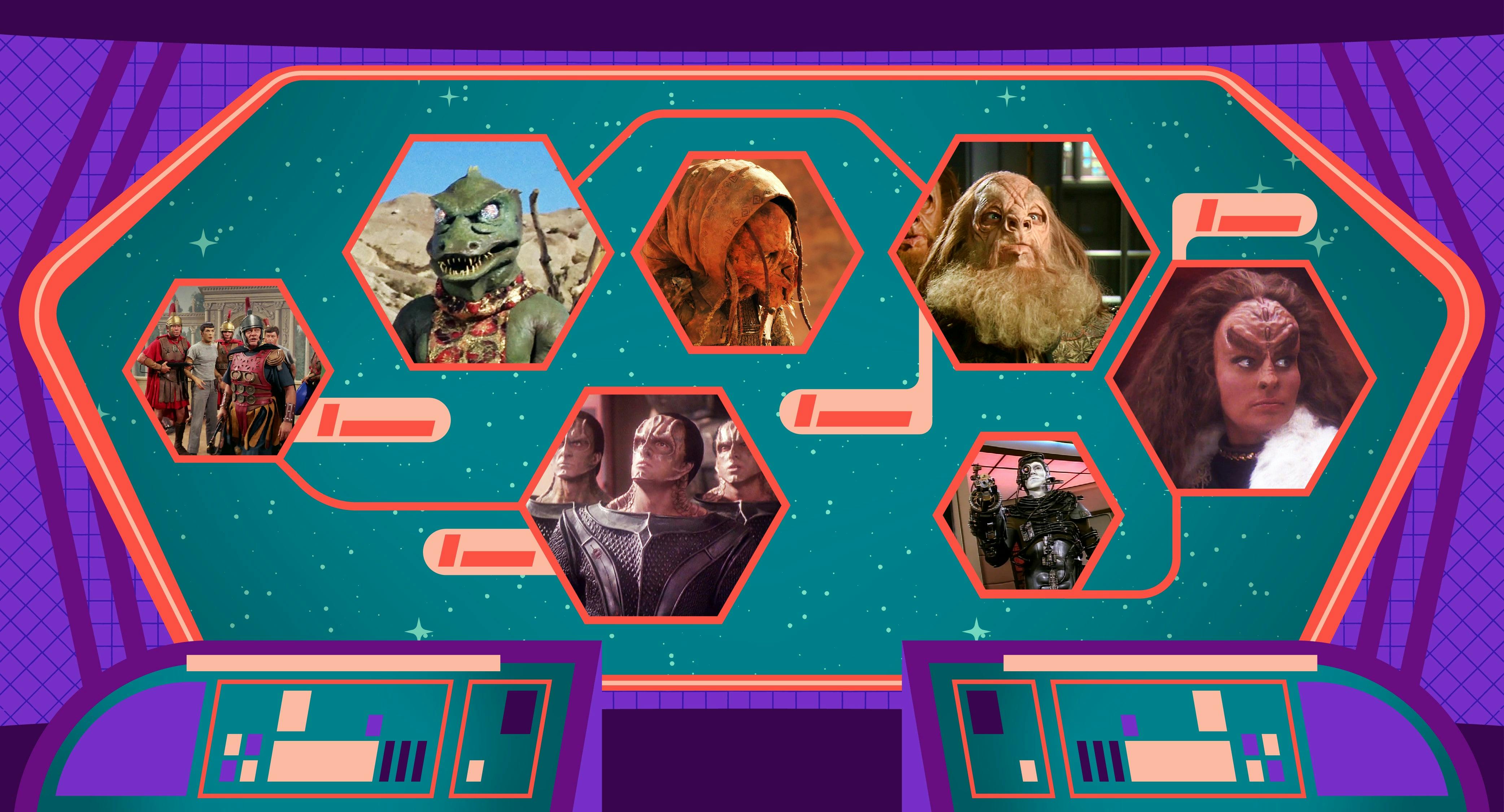
StarTrek.com
In its third season, Star Trek: Discovery launched the Star Trek universe into a bold new era. In the 32nd Century, the U.S.S. Discovery encountered the Kelpiens, the Kwejian, the Trill, and the reunified Vulcans and Romulans of Ni'Var. We've even had appearances from such lesser known peoples as the Barzans, the Coridans, and the Betelgeusians. In the fourth season, Captain Michael Burnham is likely to re-encounter these civilizations and learn more about how their societies have developed in the far future. However, there are plenty more alien races out there in the galaxy, waiting to be encountered. Here are ten civilizations that deserve to be featured in the fourth season and beyond.
A Star Trek: Discovery First Look at Season Four
1. The Klingons
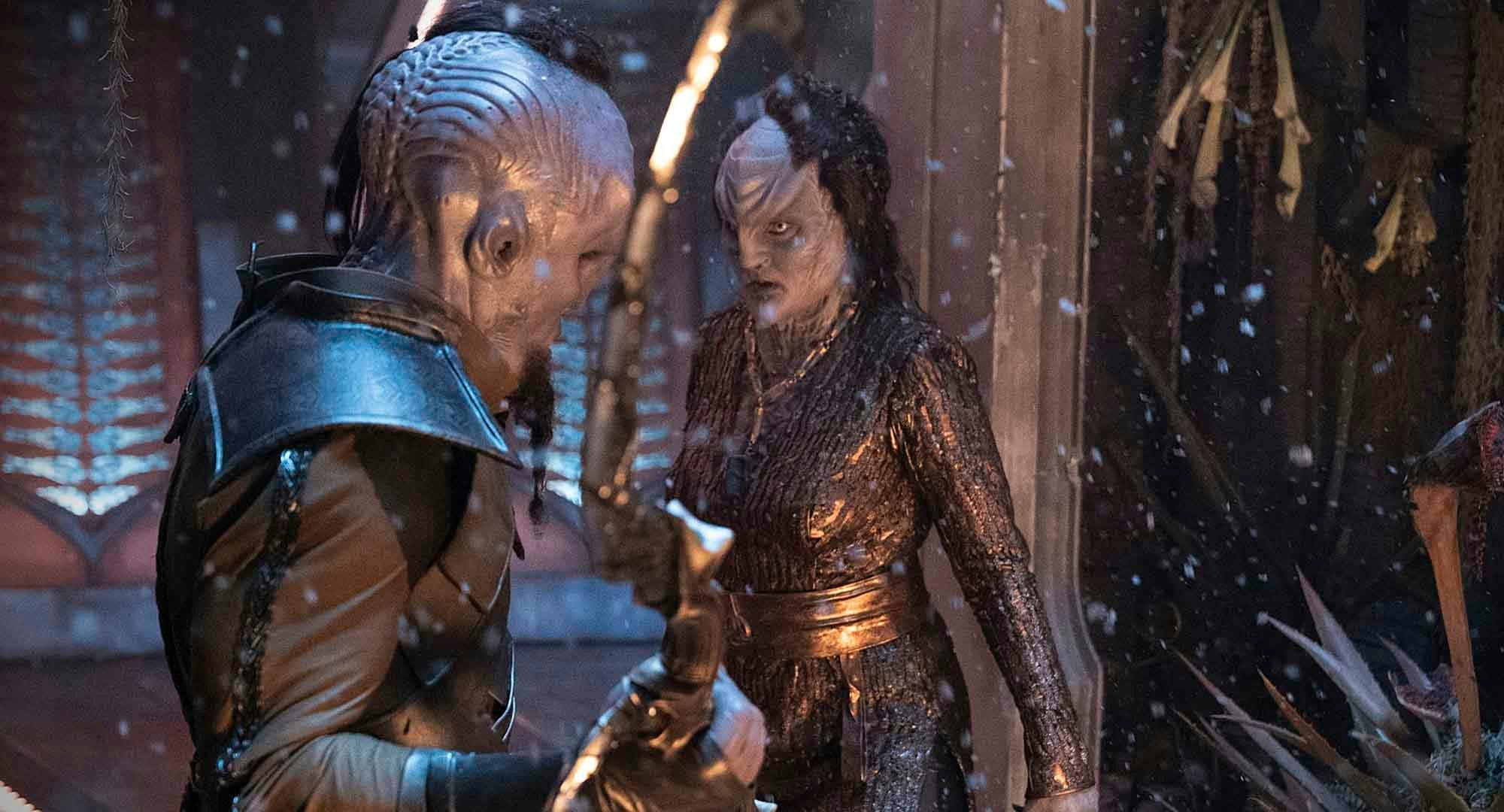
startrek.com
The first two seasons of Discovery were Klingons focused, exploring new aspects of their culture while (controversially) revamping them visually. Yet they were completely absent from the third season. While it was wise to give them a rest, it wouldn't be Star Trek without Klingons, and a huge question mark hangs over the fate of their civilization. We've seen the Empire go through different phases of its culture in the 22nd, 23rd and 24th Centuries, with different Houses rising to power and the relationship with Earth and the Federation constantly shifting, between uneasy allies and outright enemies.
Eight centuries on, there's no telling what Klingon civilization will look like. Are the Klingons still as devoted to war and honor as they were historically, or have they moved beyond that into a new era of their civilization? Does the Empire still exist, and if so, how powerful is it in this future era? With the Federation at its weakest in centuries and the Romulan Empire long since gone, the Klingons could be in a position to dominate the Alpha and Beta Quadrants, but who knows how the Burn has affected them? There's also the suggestion, in Enterprise's third season episode "Azati Prime," that the Klingons eventually joined the Federation. However, this was an alternate timeline and it's impossible to know if the primary timeline developed the same way. Even if the Klingons did join the United Federation of Planets in the 26th Century, most member governments have seceded by the 32nd Century. Both Klingon culture and its relationship with other powers are completely in question – anything could have happened.
2. The Tellarites
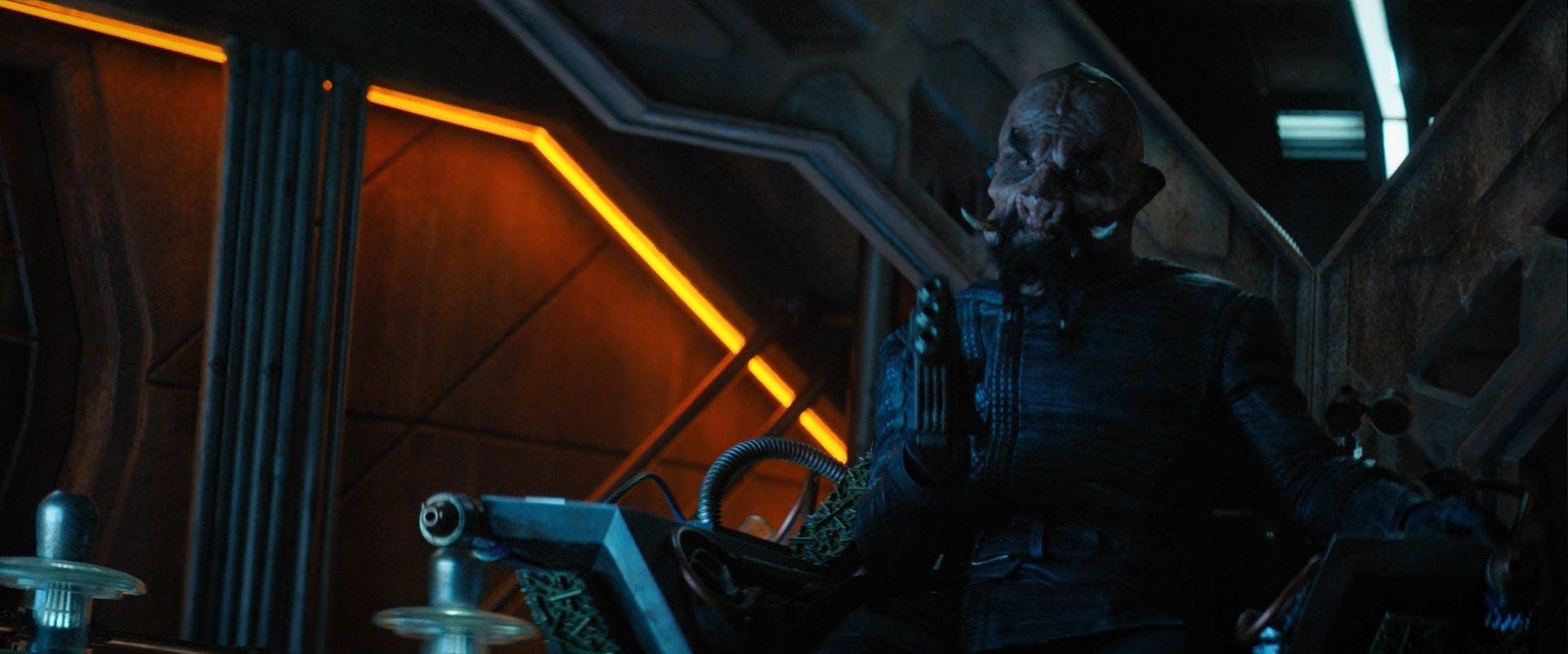
StarTrek.com
We encountered three of the confirmed four founding races of the Federation in season three. While many humans still live in the Federation and work in Starfleet, Earth itself seceded after the Burn, as did the planet formerly known as Vulcan. The Andorians left the Federation and founded the Emerald Chain with the Orions. However, the fourth race was conspicuous by their absence. We saw some brief cameos by Tellarites – Zareh was noted to trade with one, and we intriguingly saw one working for the United Earth Defense Force. The fate of the race as a whole remains in question, though. Did Tellar Prime remain within the Federation, or did the planet break away like the other founding members? Where do the Tellarites' loyalties lie?
3. The Cardassians
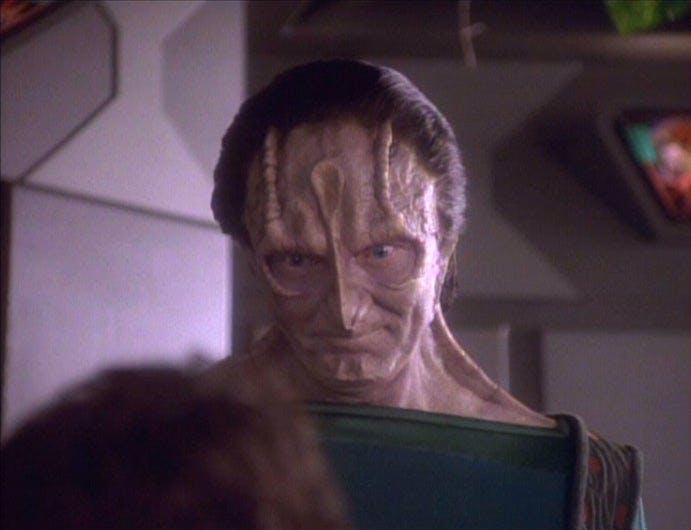
StarTrek.com
Early trailers for season three featured some glimpses of Cardassians, and it looked like we might be seeing them in heavy rotation in the 32nd Century. There were no Cardassian-focused plots in the end, but we did see Cardassians working for the Emerald Chain, but we also glimpsed a Cardassian Starfleet officer. These sightings may have culminated in the presence of — what this fan suspects is — a Cardassian woman (half, at least!) in the trailer for Discovery season four, suggesting that at some point the Cardassians, or at least some Cardassian planets, joined the Federation. Beyond that implication, we have no idea what has happened to the Cardassians in the years after the Dominion War.
The Cardassians are one of the most fascinating, well-rounded cultures in Trek. With a society founded on loyalty to family and the state, the Cardassians could be ruthless, but they were also compassionate, heroic, academic and so much more. The Cardassian Union's expansion and brutal occupation of Bajor was driven by desperation as their own resources dwindled. Although introduced on The Next Generation and significant on Voyager, it was Deep Space Nine that explored Cardassian culture and characters in the most depth – the good, the bad and the ugly.
While we also deserve a look at Cardassia in the late 24th Century on Star Trek: Picard, we need to see how their culture has developed in the centuries since. Cardassian culture could have developed in any number of directions, but it would be interesting to see a future where the Cardassians were noble and respected, while the reputation of the Federation has waned.
4. The Ferengi
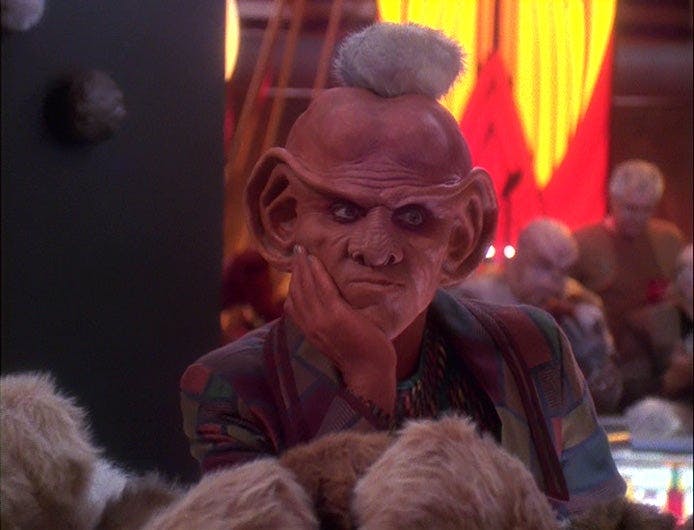
StarTrek.com
The Ferengi haven't always been well used on Star Trek. They were mostly villainous comic relief on early Next Generation, but on Deep Space Nine the Ferengi were given some real depth. This was in part thanks to some great characters brought to life by fine actors, and thanks to writers who really thought about how an ultra-capitalist society might work. The pathologically selfish, highly misogynistic Ferengi culture began to change into a more equal, compassionate one, with Rom promising sweeping changes when he took over as Grand Nagus at the end of DS9. There's so much potential for further development of the Ferengi as they move further into the future.
Of course, there were plenty of Ferengi who were against the reforms, not least Quark himself, so the road to the new Ferenginar will not have been a smooth one. In Discovery's new future, more changes could have left Ferengi culture almost unrecognisable, or even split into divergent cultures. It's also intriguing that we don't see anything of the Ferengi in relation to the Emerald Chain, the most powerful economic force in the 32nd Century galaxy. Have the Ferengi moved on beyond their desire for wealth and influence, or has something knocked them off their top spot as the galaxy's foremost capitalists?
5. The Gorn
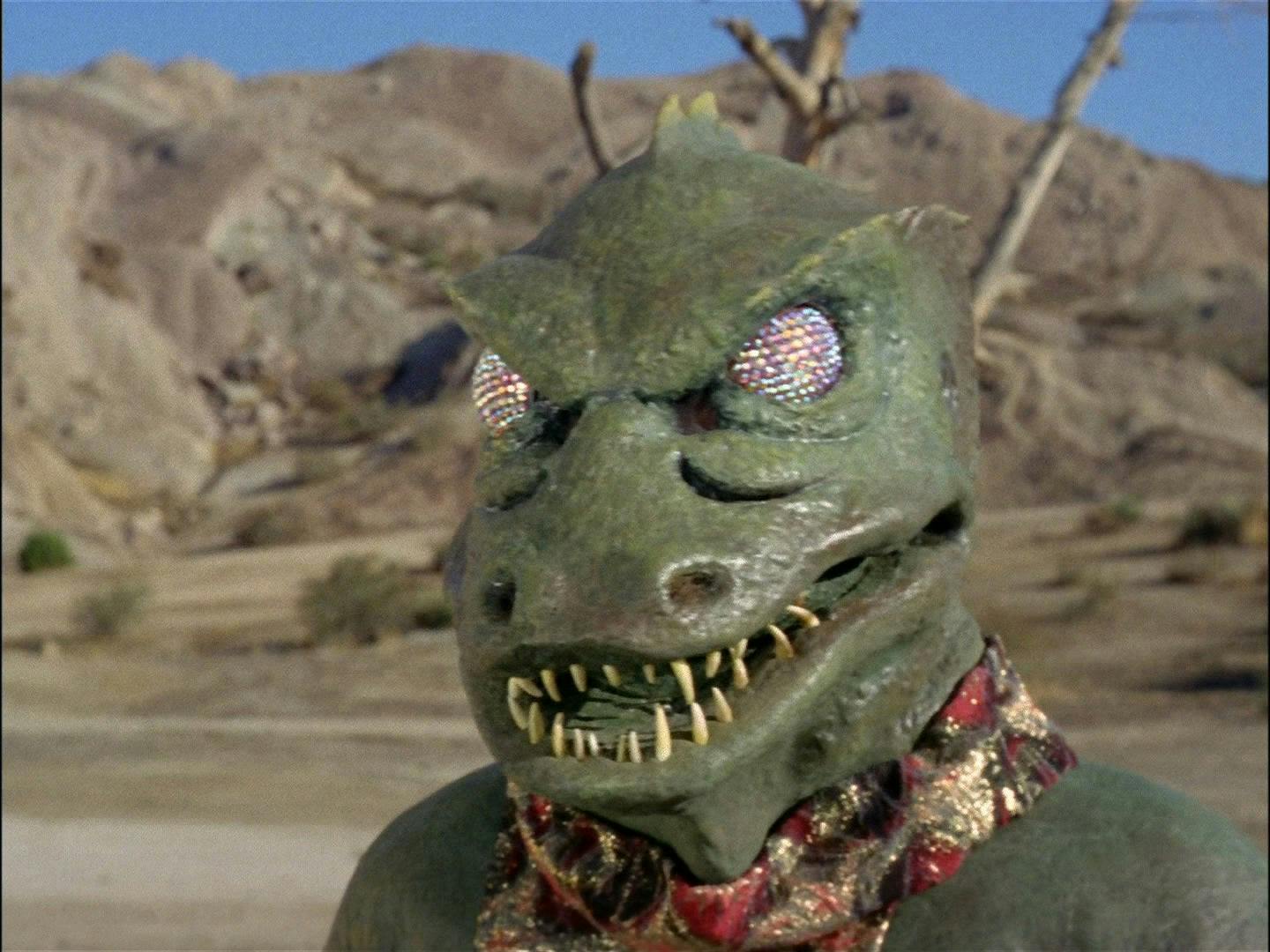
StarTrek.com
Everyone's favourite big scaly brutes, the Gorn were introduced in the classic 1967 episode “Arena” as a foe for Captain Kirk. Since then, aside from some brief animated cameos, the species' only appearance on Trek television was in a fourth season episode of Enterprise, and that took place in the Mirror Universe. There have been a number of Gorn stories in the expanded universe media, but nothing else on screen.
The Gorn Hegemony was revealed to still be in power in 3188 in "That Hope is You, Part 1." Generally considered a Beta Quadrant culture, the Gorn are likely to have rubbed up against the Emerald Chain. In the power vacuum left by Osyraa's defeat, it's likely the Gorn will be flexing their big green muscles. It would also give us a chance to finally learn what makes this alien culture tick. Plus, the Gorn would look amazing with modern make-up and prosthetic techniques. Just please don't make them all CGI – give us a man in a suit!
6. The Romans
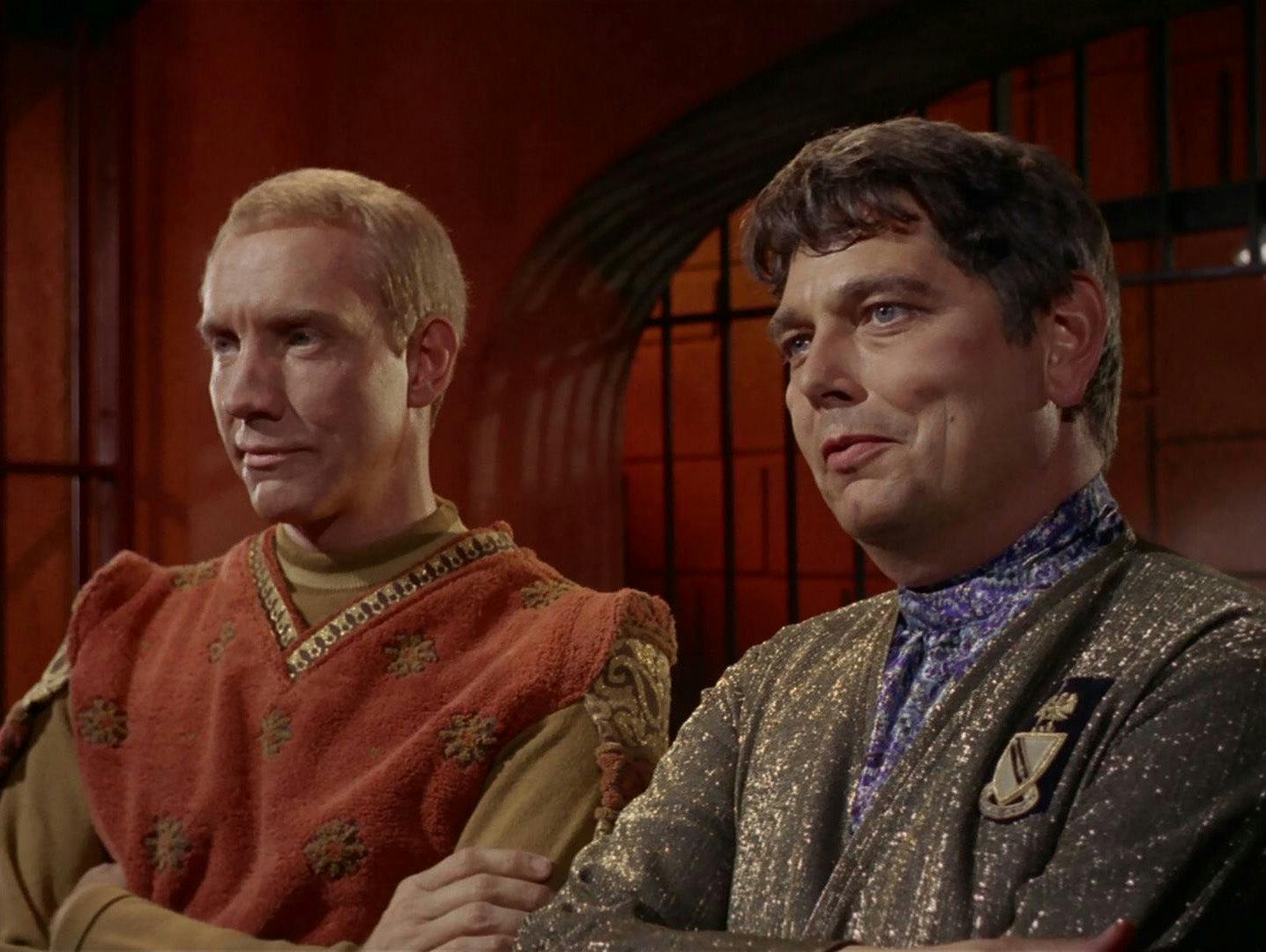
StarTrek.com
In TOS’ "Bread and Circuses," the USS Enterprise visited the fourth planet of star system 892. Tie-in material, starting with 1989's The Worlds of the Federation, have provided the planet with the proper name Magna Roma. Whatever it's called, the planet was revealed to be a remarkably Earth-like world, which had experienced a social evolution similar to Earth's, except that its version of the Roman Empire never fell. By Earth's 23rd Century, the Empire had reached the equivalent of a 20th-century level of development, with its gladiatorial battles being televised. It had been at peace for three centuries, although recently the group the Children of the Son had started fighting against slavery and their own persecution.
We saw a great number of pre-warp civilizations in the 22nd, 23rd and 24th Centuries, and all of these will have continued to develop over the centuries. We've seen that Kaminar, which made a leap forward in Discovery's second season, had joined the Federation by the 32nd Century. There was also a glimpse of the Malcorian script at an Emerald Chain mercantile exchange, suggesting the people of Malcor III had joined the galactic community sometime after the Enterprise-D's attempt at first contact in the 2360s. Of all the many pre-warp cultures, though, the Romans would be the most exciting to revisit. Not only could we explore whether the Children of the Son, their planet's equivalent of Christianity, eventually swept through the Empire like on Earth, there's a great opportunity to explore how Roman culture might have developed had the Empire continued to grow. After all, in 3189 the Empire would be at about a 29th-century level, equivalent to when the Federation was utilizing time travel and other advanced technologies. The Romans could have expanded their Empire to galactic proportions.
7. The Crepusculans
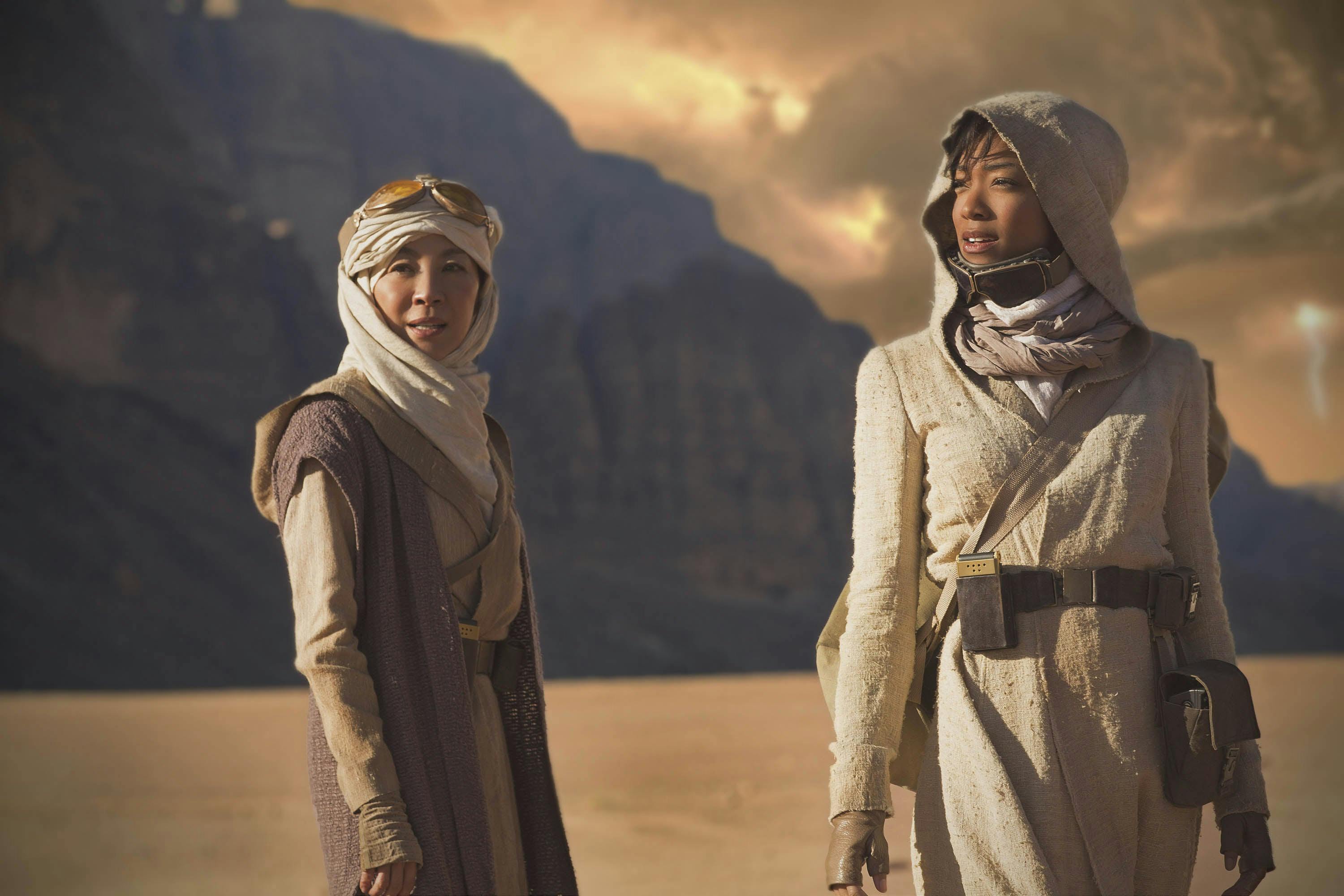
StarTrek.com
Another pre-warp culture it would be fascinating to see, the Crepusculans made their one brief appearance in the first episode of Discovery, "The Vulcan Hello." Burnham and Captain Georgiou aided a Crepusculan settlement that was completely dependent on a single well, saving them from extinction by drought. We don't know if this accounted for the entire species, but the inference was that the Starfleet officers were essentially saving the race.
The insectoid people were still primitive in the 2250s, with only the most basic technology. After almost a thousand years, however, their civilization could be flourishing, far more advanced than when we first met them. It would be fitting to see Captain Burnham take the Discovery to the Crepusculan planet to see how the species was developing. After all, she'd be responsible for their very existence.
8. The Borg

StarTrek.com
It might be less likely that we'll see the Borg on Discovery, as they seem to be firmly Star Trek: Picard territory, but the ever-popular cyborgs would be a fascinating addition to the far future galaxy. The Borg experienced huge changes and setbacks during Voyager's run, with the rise of the free drones of Unimatrix Zero and the destruction of a vital transwarp hub by Janeway. The overall feeling is that the Borg were on the cusp of a new era, one that could have redefined the Collective forever. How could they have developed over the 800-odd years until Discovery's time? Has their technology advanced even further, or have they been eclipsed by the ever-more advanced races of the galaxy? How would the resurgence of individuality among the drones have impacted the Collective? What would the collective consciousness be like after centuries more of evolution?
We also know next to nothing about the state of the Delta Quadrant in the 32nd Century (the same goes for the Gamma Quadrant, for that matter). Did the Burn reach as far as the other side of the galaxy? How has the power balance there been affected? Would the Borg be able to find a way around the effects of the Burn, or would their reliance on assimilation over invention hold them back? Perhaps most importantly of all, just how cool would a hyper-advanced 32nd-century Borg look?
9. The Kelvans
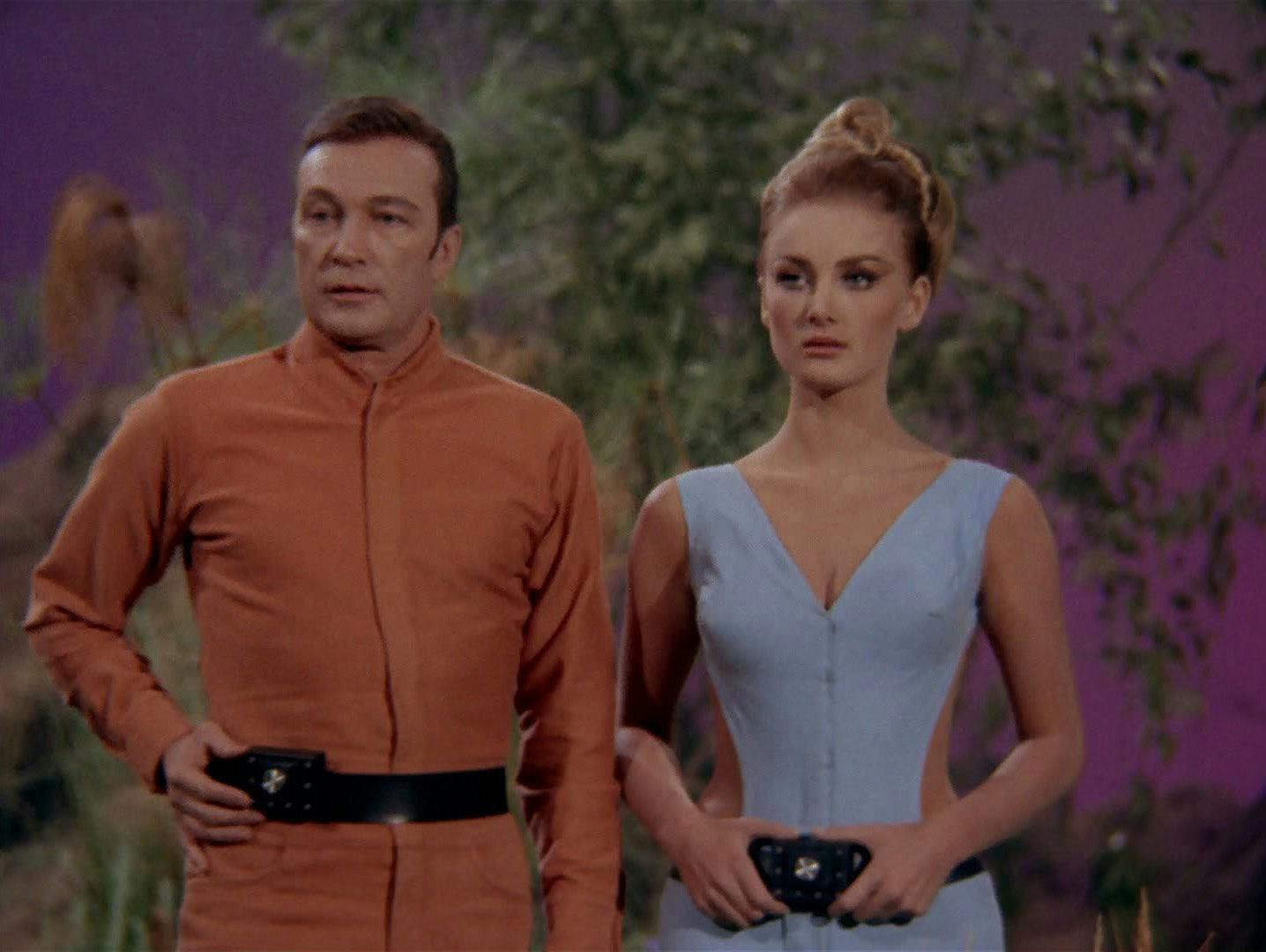
StarTrek.com
We never really saw the Kelvans on screen. The classic episode “By Any Other Name” saw an advance force of these aliens make plans for the conquest of our galaxy, but they had all taken human form, something that played havoc with their identities. In their natural form, however, the Kelvans are gigantic creatures, each with a hundred tentacles capable of moving independently. The dominant power of the Andromeda Galaxy, the Kelvans are assured of their own superiority and utterly ruthless.
An empire of Lovecraftian horrors hell-bent on conquering the Milky Way would make for a terrifying enemy for a Trek series. Given that even sophisticated Kelvan technology takes 300 years to travel between the two galaxies, the robot vessel sent back to Kelva with the offer of peace wouldn't reach there until the 26th Century. Given some thinking time and a return trip, though, the Kelvan fleet could be on their way with plenty of time to meet the U.S.S. Discovery and the resurgent Federation. They're overdue for a return visit.
10. Something new?

StarTrek.com
Aside from the Kwejian, who were introduced via Book and had some further exploration, we've had little more than brief cameos by new alien life forms. In season four, with the Discovery under new leadership and a brave new era beginning for Starfleet, it's time to get out there and explore the galaxy again! With all four quadrants of the galaxy within the starship's reach (and who knows, maybe beyond), there are thousands of strange new worlds and new civilizations to be discovered. Fans are excited to see more of the ‘discovery’ the series' title promises!
Daniel Tessier (he/him) is a critical and fiction writer living in Brighton, England. He has written material for Obverse Books, Television Heaven, Chromakey Magazine and his own blog, Immaterial, at http://danieltessier.blogspot.co.uk/ He loves Star Trek, Doctor Who and classic sci-fi television.
Star Trek: Discovery streams on Paramount+ in the United States, airs on Bell Media’s CTV Sci-Fi Channel and streams on Crave in Canada, and on Netflix in 190 countries.

